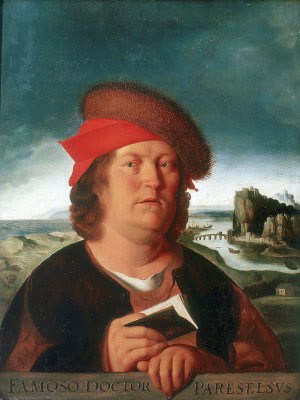Faith is a basic law or truth similar to the well-known laws of nature, such as the law of gravity. It is a universal principle. It is necessary to understand the meaning of the terms truth, law, and principle before examining what faith is. A clear definition of these terms will help you understand the principle of faith without the distortion from traditions, myths, superstitions, and customs.
The Webster’s New World Dictionary defines truth as;
- “Conformity to knowledge, fact, or actuality.”
- “Veracity…”
- “Reality; actuality.”
- “A statement proven to be or accepted as true.”
It defines principle as;
- “A basic truth, law, or assumption ….”
- “A rule or law concerning the functioning of natural phenomena or mechanical processes.”
- “A basic source.”
Its definition of a Law is; “A formulation or generalization based on observed phenomena.”
Using these definitions, it is evident that faith is a principle, law, or truth. Its effects and results come from observed phenomena and their manifestations that meet actuality both in the spiritual and physical realm.
By examining natural laws and observing phenomena, we can understand how laws of nature function and their properties. All these laws, for example, the Law of Gravity are invisible in the physical earth plane. However, through repeated experiments, scientists have verified them to be unerring and perpetual in their functioning. They are also unchangeable and routine.
For any universal law to hold, it must display these properties, whether it is a spiritual, mental, or physical law. Thus, faith which is a spiritual law should be;
- Invisible
- perpetual
- Unchangeable
- Routine and
- Unerring in its functioning in the mind
Invisible in Operation but with Visible results
Some people doubt the principle of faith because it primarily happens within the mind, and as such, its physical operation cannot be observed. However, this is in keeping to its invisible property like all other natural laws.
The law of gravity, for instance, is not physically visible, yet we can observe and measure its manifestations. Likewise, even though the operation of the law of faith is invisible, its results are visible.

On the earth plane, the operation of many laws is invisible. For example, we know red blood cells carry oxygen atoms in the body. We also know cells divide in the body for growth, and we also know of the law governing the forces in an atom. What we do not see are the laws governing these manifestations. Yet, no scientists or metaphysicians will deny the existence of these laws.
Therefore, the fact that we cannot observe natural laws’ operation with our physical eyes does not negate the existence of these laws. Physical observation of law’s operation cannot be the only measure or determinant of whether a law exists or not.
In the same vein, having ignorance of universal law or principle does not stop its working nor spare you from the consequences of violating the law. The truth of the matter is, a Law or Principle is not what we observe and measure but rather its manifestations.
What is faith, and how does it work?
Faith is the mental acceptance of the truth or the actuality of something. As such, it is a mental process happening in the mind. There is no physical ritual or any biological process involved. Furthermore, faith is not reliant on whether the ‘something’ believed is true or false. In this regard, its synonyms are belief, loyalty, trust, etc.
Determination of facts or what is truth is not a prerequisite to having faith or how it works. Instead, it calls for absolute trust, confidence, certainty in the source. This complete trust is regardless of whether there is any objective proof to support the source or not.
Related reading: 8 Easy Tips to Grow a Positive Mindset – Opens in new tab.
The cure for false beliefs
Throughout human history, there is evidence that mankind had faith in all kinds of myths and superstitions. Most of these beliefs developed before the scientific revolution were erroneous and were formed during mankind’s primitive stages. Many of these erroneous beliefs were held as fact until scientific knowledge proved them false. They include;
1. Most people, even the governing religious institutions believed the earth is flat until early explorers and merchants in the fifteenth century proved them false.
2. The Roman Catholic church believed the earth was at the center of the solar system, and it required everyone to believe so without question. The penalty for any contrary teaching was ex-communication from the church. This belief was held as truth until astronomers such as Galilei Galileo proved the sun was at the center of the solar system through scientific experiments. For his efforts, he was excommunicated from the church.
3. In the past, with no knowledge of viruses, bacteria, and other microbes, doctors used bloodletting as a treatment option. The belief was that the blood was the cause of illness and not the microbes in it, as these were yet to be discovered. When one fell sick, it was common for doctors to puncture a vein and let out blood. As a result, most people died from the bloodletting procedure more than the illness itself.
4. As Daedalus and Icarus’s tragic story shows, many in the past believed that for humans to fly, they would need to have wings. As such, human flight was deemed close to impossible until the Wright brothers invented the plane.
Examples of past erroneous beliefs are many across many societies, and no single book can capture them all. Yet, for a long-time, people believed in them without any investigation or having any form of proof. Unfortunately, these beliefs had the effect of stunting humankind’s intellectual evolution and tied many in a state of ignorance regarding their world.
Such was the story of mankind until the age of enlightenment which ushered in scientific research and knowledge. Thus, verified scientific knowledge and facts are the cures for false beliefs that mankind had faith in.

Modern Usages of the Principle of Faith
Most people miss out on the magic results of faith, even in modern times, since they do not understand its structure and how it works. A remnant few are the only ones who appreciate the esoteric mystery of faith and its operation. Fortunately, it is not difficult to see how crucial the principle of faith is in a carnal sense and how it impacts our lives. A few simple examples can illustrate this importance.
First, in sports, the principle of faith plays a vital role in establishing a winning attitude and attaining the desired result at the end. Two equally talented teams facing each other all have faith they will win. However, only the team with the most faith eventually wins. Even in the face of adversity, they do not second-guess themselves but find in faith the motivation to surmount their obstacles and win.
The second example is found in the lives of individuals who have overcome strife like poverty, war, disability, and more to forge a successful career. They always testify of how they used the invisible principle of faith.
It is a testament to the power of faith that a whole group of philosophies, including the “New Thought” movement, have risen to address how to overcome adversity in various forms.
The Placebo Effect and Faith
Another significant example of the magic of the invisible principle of faith is the Placebo Effect in medical treatments. A placebo, also called a sugar pill, is a medically inactive substance or procedure that still proves effective though it has no inherent therapeutic value. It is a baffling medical phenomenon that illustrates the mystery of how faith works.
Placebos can be anything and include colored pills, injections of harmless saline water, and even sham operations. Even without having any therapeutic or healing properties, the fields of medicine and pharmacology have recorded them having cured everything successfully, including cancers and asthma, among a small group of people.
Such is their effect that it is a required procedure for all new treatments to test for the placebo effect before certification as being medically sound. Companies must test their drugs and ensure they have a high cure rate than the control group taking the placebo. The placebo effect clears any doubts on how faith works within the mind since the substance itself has no medicinal value.
To better grasp how the placebo effect works, you will need to first understand how your body reacts to thoughts in your mind.
Related reading: Scientific Studies on Positive Thinking – Opens in new tab.
Hypochondria – Manifesting the Disease
Modern medicine has been able to establish that what you completely believe in, in your heart and mind can manifest itself on your body and have adverse effects on the body. For example, if you are suffering from severe psychological depression and think you have a disease, you will soon manifest its symptoms.
A doctor could examine you and perform all the tests and still find nothing wrong with you from a physical perspective regarding the disease. Yet, you will still be displaying the symptoms.
It is only then that the doctor realizes that you have a psychological problem and your illness’s problem lies in your mind. This condition is known as hypochondria in medical terms. The Merriam Webster Dictionary defines it as being excessively concerned with your health, especially when this concern comes with imagines physical illnesses.
The fields of medicine and psychiatry also refer to hypochondria as Asthenic Reaction or Neurasthenia. These are quite archaic terms that mean a state of nervous weakness.’ They refer to a syndrome marked by complaints of fatigue, diffuse pain, insomnia, weakness, and irritability. They are still used interchangeably with hypochondria. This illustration shows how what is filled in the mind by faith has a potent effect on the physical body. It further shows that whatever you have faith in within your mind becomes law and, as a result, has tangible manifestations.
Why Do Placebos Work?
As the above discussion illustrates, the mind effect has to be eliminated for the new drugs’ chemical effects to be evaluated objectively.
In their book “The Healer Within” (Aff.link), Steve Locke, M.D. and Douglas Colligan discuss the placebo’s impact on the medical and pharmacology field. They describe how, for decades, the placebos have proved to be some nuisance to drug-making companies.
These companies must test their drugs against pills or liquids resembling the real thing. They observe that researchers and doctors discover that the power of a good drug is not simply about having excellent chemical properties through testing for the placebo.
In the testing for new drugs, the drug companies use two control groups of people. The first group takes the placebo with the knowledge that it is the true drug for the illness. The second group takes the true drug for the illness, and it is informed so. For the drug to be accepted as a medically sound cure, its effectiveness must be higher than the placebo.
The placebo experiments further prove the power of faith working in mind to bear concrete manifestations.
There is no scientific explanation of how the faith works in mind. All medical and related fields cannot explain the placebo effect. As a result, the investigation has turned to the spiritual realm looking to explain the evidence gathered using scientific methods.
Related reading: How Our Conscious and Subconscious Mind Work – Opens in new tab
Bernheim’s experiments
Hippolyte Bernheim (1910-1919) was a medicine professor in Nancy, France. His work captured in his book Suggestive Therapeutics gives insight into how a patient’s expectation of healing and the physician’s suggestion impact the subconscious mind.

In one of his experiments, a man had tongue paralysis, which yielded no medication or treatment. At one appointment with his doctor, the doctor informed him of a new instrument that he promised would heal the man.
The doctor then placed a pocket thermometer into the man’s mouth, and the man imagined this to be the new instrument. In a short while, he was celebrating that he could move his tongue freely.
In another instance, a girl came to Bernheim suffering from complete loss of speech. After a complete diagnosis, he told the girl that electricity could at times cure speech loss instantly. He got an induction apparatus and placed his hand over the girl’s larynx, moving it a little. He then told the girl she could now speak aloud. Surprisingly, the girl was able to say, ‘a’ then ‘b,’ and then ‘Maria’ and went on to speak clearly with the loss of speech gone.
Bernheim experiments which include producing a blister on a patient through suggestion, have been experienced by other doctors globally. The power of faith and the patient’s expectation work on the subconscious mind producing a physical manifestation. The thermometer and induction apparatus are all similar to the placebos. Only the patient’s belief in them makes them effective.
Paracelsus on the Principle of Faith
Several other researchers and scholars have come to a similar conclusion that faith working in mind is the Great Master. Paracelsus (1493 -1541), a Swiss doctor and alchemist, conducted investigations into how faith works.
As Joseph Murphy quotes in the Power of Your Subconscious Mind, he concluded you would get the same results whether the object of your faith is real or false. Paracelsus gave the example that if one believes in Saint Peter’s statue as he would believe in the Saint himself, the results will be the same as believing in Saint Peter. He acknowledges that this is superstition, yet that is how faith works, producing miracles regardless of true or false faith.

From his conclusion, the placebo effect is a miracle when seen from a physical perspective. It may appear that a pill without any medicinal value cured the patient, yet it is his belief that the pill will cure him that healed him.
In understanding the explanation from Paracelsus, it becomes clear how the religious faith healings and those of the occult happen. It also shows the danger that false faith can have since it will have physical manifestation like a person suffering from hypochondria.
Religious and Occult Healings
The preceding discussion on the placebo effect and the findings by Paracelsus provide a window into religious and occult healings. Using the scientific knowledge above, you can understand how these healings work and happen. Below is a breakdown of how they happen.
The materials used in these healings range from shrines, saints, relics, charms, holy water, Eucharists, amulets, rings, talismans, prayer cloths, and others. These items on their own have no medicinal or chemical properties to provide healing. They are like the placebo or sugar pill. Just as the sugar pill has no healing power, so too do these items.
The principle behind the healing is not in the physical items or geographical location. Yet, just like the placebo, they provide healing to a small group of people just as the actual medicine for the condition would do.
The individual cured unknowingly and unconsciously applies the invisible principle of faith. The physical items like the placebo pill help create a visualization of the cure in the person’s mind, thus establishing his faith.
In his book The Magic of Believing (Aff.link), Claude M Bristol further expounds on this, noting that all those trinkets are inanimate objects without any power. However, when people believe them to be powerful, they breathe life into them, and through that belief alone, they become effective while having no power per se.
The problem with this is the delusion it creates and how it hampers understanding the invisible principle of faith.
The person in believing in the object to be the cure becomes cured but deludes himself that the object is the cure and not the underlying principle of faith. Instead of understanding the principle of faith, which could have worked with any object, the person only reinforces his idea that the trinket is a healing force.
If you want to learn more about Subconscious Reprogramming and the Manifestation process. Check out my suggestions on manifestation courses and books. – Opens in new tab
End Words
In conclusion, the key takeaway is that the principle of faith works whether one is aware or ignorant of it. It also does not matter if the object you have faith in is worth believing. Whichever the case, faith will bring the manifestation of the Holy Spirit to be a witness for or against you.
More importantly, you should heed the warning to watch and investigate what you believe in and put in your mind. As this article has shown, what is filled in the mind will bear physical manifestations. Exercise the same caution you use to feed your physical body to how you feed spiritually.
Check out our recommendations at “Occult Bookshelf” and many free resources at our “Free Library“
♦ If this article resonates with you, please join our newsletter by using the forms on this website so we can stay in touch.
Stay in Touch
 Join our newsletter by using the forms on this website or click here!
Join our newsletter by using the forms on this website or click here! Follow us on Google News
Follow us on Google News Follow us on Facebook
Follow us on Facebook
Featured image from Depositphotos








